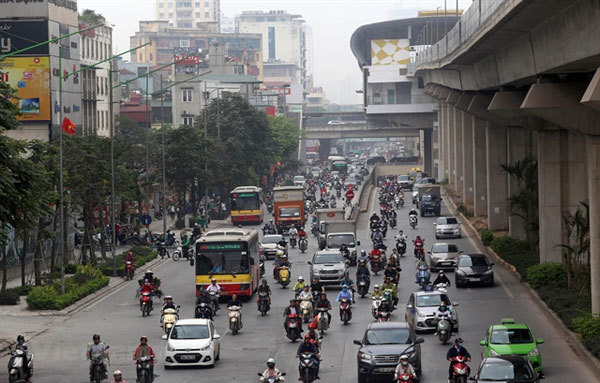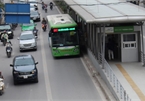 |
| Buses are a key means of public transport, but many bus companies are facing difficulties. VNA/VNS Photo Huy Hung |
A total of 104 bus routes in Hanoi are covered by the State budget. These are known as State-subsidised buses.
Before April 10, 2019, those routes automatically received a fixed amount of money from the State budget to operate.
But Decree No. 32/2019/NĐ-CP dated April 10, 2019, regulates bidding for the subsidised bus routes.
And as per the decree, the bidding should have been completed by the end of last year, but only 36 out of the 104 routes were on schedule and thus qualified for State funding.
The other 68 routes finished the bidding process in April this year, meaning they missed out on a combined VND312 billion (US$13.4 million) to operate this year.
Unsurprisingly, those bus companies are facing difficulties.
Besides, the COVID-19 pandemic has had a negative impact on public transport, resulting in falling turnover.
Ha Tay Transport Company may have to suspend serviced on the subsidised bus line No. 72 due to lack of revenue to cover expenses.
Nguyen Quang Minh, general director of Ha Tay Transport Company, said: “Since September 1, 2019 when we started implementing the policy issued by the Hanoi People's Council to expand free bus tickets for the elderly, the number of free ticket users has increased dramatically, thus reducing the company's revenue.”
“Besides, our company has been facing many difficulties because passenger numbers have fallen considerably due to the COVID-19 pandemic,” Minh said.
Hanoi Tram Stock Company is in the same situation.
The company operates eight bus routes with financing from the State budget of VND16 billion (US4689,000) per month.
However, the company has not yet received the money.
The company has been forced to take out bank loans to maintain its 140 buses and pay 750 drivers and assistants.
According to Nguyen Trong Thong, president of the Hanoi Public Passenger Transport Association, since earlier this year, the companies that operated the 68 bus routes that had failed to complete bidding on time had borrowed VND200 billion (US$8.6 million).
“With interest rates from 7 to 8 per cent per year, the bus companies have been burdened with financial pressure and they may have to close some routes unless the city finds a solution,” said Thong.
“Issuing free bus passes for the elderly is a sound policy,” Thong added.
“However, in the bidding process for bus routes, the city needs to calculate how much money it allocates to ensure businesses operate stably and serve public travel needs,” he said.
According to statistics from the Hanoi Transport Department, as of late August this year, passenger, revenue and expenditure targets for the 104 routes had not been met last year or this year.
Specifically, the total number of passengers reached 221.3 million, falling 26.8 per cent, of which subsidised buses accounted for 203.4 million passengers, including free bus passes, down 23.8 per cent over the same period last year.
Revenue reached VND291.1 billion (US$12.5 million), 45.9 per cent short of the target set for 2020.
To remove difficulties for bus service providers, director of the Hanoi Transport Department Vu Van Vien has asked municipal authorities to disburse funding for the first quarter this year for 68 bus routes with the total amount reaching VND312 billion.
According to statistics from the Centre for Management and Operation of Urban Traffic in Hanoi, annual subsidies for buses over the past three years have risen from VND1.3 trillion (US$56 million) to VND2 trillion (US$86 million) and VND2.7 trillion (US$116 million). VNS

Hanoi Public Transport Association proposes bus-only lanes
Hanoi Public Transport Association has proposed to build 14 bus-only lanes in order to attract more passengers and reduce personal vehicles.